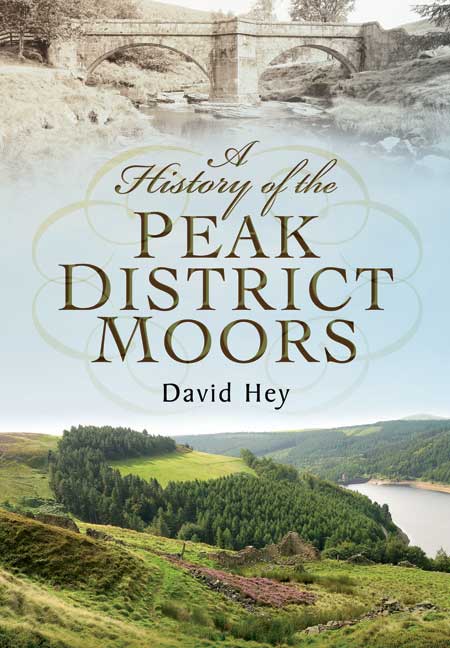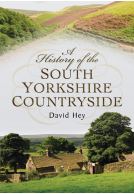A History of the Peak District Moors (ePub)
Imprint: Wharncliffe Books
File Size: 27.5 MB (.epub)
Pages: 210
Illustrations: 80
ISBN: 9781473831964
Published: 9th January 2014
The moors of the Peak District provide some of the finest walking country in England. The pleasure of rambling across them is enhanced by a knowledge of their history, ranging from prehistoric times and the middle ages to their conversion for grouse shooting and the struggle for the 'right to roam' in modern times. This distinctive landscape is not an untouched, natural relic for it has been shaped by humans over the centuries. Now it is being conserved as part of Britain's first National Park; much of it is in the care of The National Trust.
The book covers all periods of time from prehistory to the present, for a typical moorland walk might take in the standing stones of a prehistoric stone circle, a medieval boundary marker, a guide stoop dated 1709, the straight walls of nineteenth-century enclosure, a row of Victorian grouse butts, a long line of flagstones brought in by helicopter, and very much more besides. Some of this physical evidence remains puzzling, but most of it can be explained by assiduous research in local record offices. The author has not referenced the documents, as that would have made the book twice as long, but the bibliography provides leads to where the information may be found.
As featured in the Buxton Advertiser, Buxton Today and Peak Courier.
Fascinating look at an area in England used by ramblers to walk about. Once covid gets under control. I'd enjoy going and taking a walk or two around England, Scotland, and Ireland! I've read many books on the paths around the country that other walkers have taken and would enjoy doing a walking( or even biking) tour myself!. What I enjoy most about the books I've discovered, is that the writers include historical fats about the walks. David Hey has done a commendable job of including the history of this area. While not comprehensive, he does offer readers guides to research various historical items of interest so they can maybe research themselves. I'm not sure if this took away from the area for anyone, or that is was less interesting because of it. But I would think that it would prove an addition to the tour if one went in search of the history of a thing or two themselves! I know it would for me. The District's history was interesting to read about and, it's nice that the enclosures are once again being opened to foot traffic!
NetGalley, Catherine Hankins
Rating: 5 out of 5 stars
NetGalley, Natalie Liddle
It was fascinating. informative, inspiring and a joy to read.
I have learnt a lot, expanded my knowledge in parts and learnt a lot I never knew too and the book was amazing from start to finish. There is so much more I need to explore and I am so ready now I have read this book.
Highly recommended. It is that good my other half who will not read barely anything even read sections that I spoke about so this book really is for everyone.
This book offers a lengthy exploration of the history of the Peak District Moors in England. It begins with the early history of the moors (Stone Age to the Romans/Vikings), followed by the Middle Ages, then the 1550s to 1750s, then talks about the different features such as canals, railways, boundaries, enclosures, and the modern history. As you can probably extrapolate, there is a lot to cover! Imagine reading someone's accessible thesis on the history of the moors, and this is really what you'd get. There is obviously a lot of work gone into this book. I think that the best audience for this book are history buffs and maybe even locals or transplants to the area. I think that the strength of the book is the Early History chapter section. I really enjoyed reading the info that I had no preconceived knowledge about, it was worth the time and effort to get through. Thank you again for the chance to look through your book.
NetGalley, A Home Library
The author's obvious love for his subject completely shines through and I found it interesting and loved the land connections to the kings of England,monastic establishments and the Chatsworths down through the ages.
NetGalley, Julie Hall
Rating: 5 out of 5 stars
NetGalley, Brenda Carleton
"A rambler made is a man improved" and "The man who never was lost never went very far", both quotes in the book by Bert Ward strongly resonate with me and could not be more apt. Rambling on the moors is indescribably special speaking from personal experience and encountering this book on the history of the moors is such a thrill! The author writes about the moors from prehistory to the current time. In ways so much has changed yet much has remained the same, thankfully.
>From the descriptions and origins of words such as mor, tor, shaw, worth, feld and hey to charmingly-named places such as Owler Bar, Fox House, Toad's Mouth, Cat and Fiddle route and Pudding Pie Hill, I am struck by the variety of the moors and sheer amount of history! One can envision people living on them thousands of years ago in their rudimentary small homes with a bit of land worked with handmade tools Amongst the many things explained are smelting lead with charcoal fuel, the repercussions of the Black Death, salter routes, peat heat, stints, sheep breeds, reed bread, game (especially grouse) hunting, woolcombers, poaching laws and implementation of public paths. Many surnames stem from this area, too.
Amongst my favourite new-to-me information is the provisions of quartz grit for birds on moors and clever grouse drinking troughs, the latter of which are illustrated in photographs. It was fascinating to learn more about land boundaries and laws, guide stoops, the ice house at Longshaw Lodge, variable moors themselves with flora and fauna, ancient tools, hut circles, the discovery of cremated ashes and mound barrows.
The illustrations, maps and photographs are very useful and inspiring. What fun recognizing some of the places.
Buried in -40 and deep snow six months of the year where I am currently (not to mention covid), walking on Devil's Dyke, Derwent Bridge or Toot Hill seems like a distant dream. One day I will return, this time armed with far more information and recollections from this book which will surely enrich my experience!
Rating: 5 out of 5 stars
NetGalley, Annie Buchanan
This book is an great example why I love reading local history. The author was certainly a gifted writer and deeply knowledgeable in his expertise; but mostly it's the respect and abiding love local historians have for their subjects which shine through, and move us, and which leave an indelible connection to an area.
The author writes well and authoritatively and the book is laid out logically. The writing is succinct and information dense, but not pedantic or overly academic. The chapters are arranged thematically in very roughly geographic and chronological order from prehistory to the modern day, with emphasis on uses, "improvements", enclosures, and eventual recreational/access rights. There were so many things included here of which I was utterly unaware (my previous education seems to have been sorely lacking especially concerning neolithic through iron age encampments and military movements) as well as a fascinating and exciting (really truly!) recounting of the Right to Roam movement of the area in the 19th and 20th centuries.
My biggest takeaway here was the impressive breadth and comprehensiveness of the included information - it's a truly splendid testimony to the author's competence and deep familiarity with his subject. I can easily imagine that he was a fascinating and very knowledgeable lecturer.
Although there are no chapter notes or annotations, the author has included a fairly comprehensive bibliography and cross referenced index. The book contains numerous photographs and charts to support and illustrate the salient points.
This would be a good choice for readers of local history, public or home library use, cooperative/hikers/ramblers groups, Bed & Breakfast accommodations - especially those which cater to ramblers, and writers researching the area and history for background.
Five stars.
This is no 'desk-based study' but the product of a lifetime of living, working and researching in or immediately adjacent to the moors that gives the book a quality which is distinctive... This book is beautifully written in the clear simple prose which typifies David's work, and is fully illustrated with numerous black and white photographs.
The Local Historian
If you are familiar with the Southern Pennies then you will enjoy A History of the Peak District Moors.
This England
This is not a typical 'book of 'X'' but a narrative demonstrating the authors love and profound knowledge of the Peak District. The story has both bones and flesh to fill the frame...He never dumbs down the concepts under discussion but approaches them in such a way as to make them accessible to all...The casual reader will gain a greater understanding of both landscape history and the impact of resource exploitation whilst being handed a framework for reading the landscape. And those of a more academic bent will feel confident that Hey's facts are reliable (and quotable).
Agricultural History Review
There are some eighty photographs which portray the natural beauty of the area and nature lovers will find this book the perfect companion.
High Peak Review
However well we think we know our surrounding moorlands, here is an opportunity to explore afresh under the guidance of David Hey...David writes with a contagious enthusiasm. This generously illustrated book roams amongst the best – and lesser-known – moorland features...The book itself is a guide par excellence.
Peak Advertiser
Strongly recommended for visitors to the Peak District who would like to learn more about the area's history.
Matt O'Brien - My Pennines Blog
A new book by well known local historian and author David Hey, draws on his extensive grasp and knowledge of the area and its history.
Bradway Bugle
A superb new book about the Peak District's fascinating history written by a local professor...The book explores the history of Britain's first National Park from the Stone Age to the modern day, and also tells the story of the first rambling clubs. The natural beauty of the area is lavishly illustrated with over eighty photographs.
Reflections Magazine
The perfect companion guide for nature lovers and those wishing to learn more about the area.
Discover Your History
While it might not be the first book about Britain's first national park...few tomes can have been quite as comprehensive as David's. Within these pages are Romans and Vikings, railways and canals, ramblers and World War Two soldiers.
The Star (Sheffield)
The book not only explores the history of Britain's first National Park from the Stone Age right up to the modern day, it also tells the story of the first rambling clubs. The natural beauty of the area is illustrated with more than 80 photographs.
Barnsley Chronicle
About David Hey
One of Pen & Sword's best-known local authors, David Hey, sadly passed away in March 2016.
He was Emeritus Professor of Local and Family History at the University of Sheffield, President of the British Association for Local History and the Chairman of the British Record Society. He also served as the South Yorkshire and North-East Derbyshire Area President of The Ramblers' Association. He was well-known and much respected for his numerous books, articles and lectures relating to Yorkshire and Derbyshire, including The History of Penistone and District (2002) for Wharncliffe Books. He grew up in the Penistone district and later lived with his wife at Dronfield Woodhouse.
















